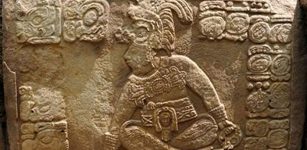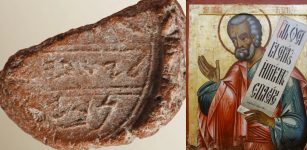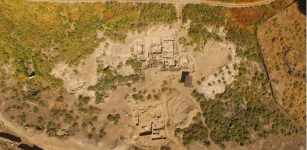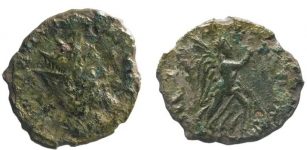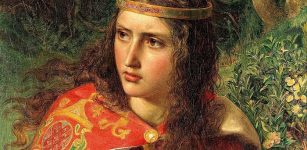Oldest Carving Of A Penis Discovered On Ancient Mongolian Pendant
Jan Bartek - AncientPages.com - Scientists report the discovery of an ancient pendant that may have the oldest carving of a penis ever unearthed. The stone was found at a dig site in northern Mongolia's Khangai Mountains. The piece of ornament interpreted as a phallus-like representation is about four centimeters long and made by humans. The dating of the mateial shows it was from approximately 42,400 to 41,900 years ago, putting its creation in the Upper Paleolithic.
Microscopic images of the modifications observed on the graphite pendant: (a–b) mid-section groove, (c) short groove located at one extremity of the artefact, (d–e) parallel striations observed on the flat side of the artefact, (f) highly smoothed and shiny facet present on the flat side of the artefact, (g) 3D reconstruction of the mid-section groove, (h–i) profile of the mid-section groove, (j) 3D reconstruction of the groove located at one extremity of the artefact, (k–l) profile of the groove located at one extremity of the artefact. Credit: Scientific Reports (2023). DOI: 10.1038/s41598-023-36140-1
"Figurative depictions in art first occur ca. 50,000 years ago in Europe, Africa, and Southeast Asia. Considered by most as an advanced form of symbolic behavior, they are restricted to our species.
Three-dimensional phallic pendants are unknown in the Paleolithic record, and this discovery predates the earliest known sexed anthropomorphic representation. It attests that hunter-gatherer communities used sex anatomical attributes as symbols at a very early stage of their dispersal in the region. The pendant was produced during a period that overlaps with age estimates for early introgression events between Homo sapiens and Denisovans, and in a region where such encounters are plausible," the science team wrote in the study published in Nature.
The black pendant has several grooves, but two of them caught the attention of scientists. Researchers think these grooves were carved into the stone to make it resemble a human penis.
"Having established the age and complex life-history of the object, the question of its origins is still open," the research team wrote in their paper.
See also: More Archaeology News
Whether the ancient object will be accepted as the oldest depiction of a phallus is also a matter that will be discussed. Some scientists have already stated the ancient Mongolian stone may not be a phallus pendant but rather a tool used for an unknown purpose.
Currently, the oldest stone with a carved phallus was found in Germany and the object is about 28,000 years old.
The study was published in the journal Nature.
Written by Jan Bartek - AncientPages.com Staff Writer



